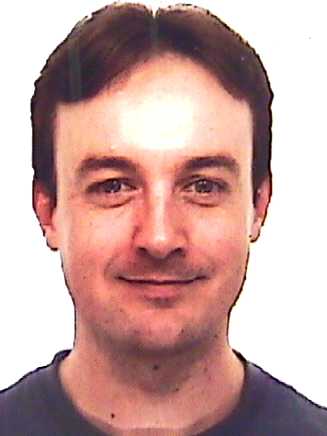Dr. Colin Maden

Dr. Colin Maden
Staff of Professorship for Isotope Geochemistry
- Work phone +41 44 632 78 39
- Fax print +41 44 632 11 79
- Work phone +41 44 632 09 41 Alternate(Alt.)
- phone +41 44 632 78 41 Secretariat(Sec.)
- emailcolin.maden@eaps.ethz.ch
- call_made0000-0002-6644-9535
- contactsV-Card (vcf, 1kb)
Function
I am a senior scientist working in Prof. Maria Schönbächler's and Prof. Derek Vance's Isotope Geochemistry and Cosmochemistry groups.
As a physicist, my interests lie in understanding the physics of analytical devices, in particular mass spectrometers, and improving their performance for applications in Earth Sciences. I have high-level responsibility for the infrastructure of the isotope geochemistry groups, which includes 15 mass spectrometers (MC-TIMS, MC-ICPMS, SF-ICPMS, Quadrupole-ICPMS, and commercial and in-house-built noble gas mass spectrometers), 190 m2 of clean room chemistry laboratories, and related IT-infrastructure.
Research area
Besides maintaining and (hopefully) improving every-day lab life, I'm working on the development of a thermal ionisation cavity (TIC) source to enhance the ionisation efficiency of thermal ionisation mass spectrometry (TIMS). This has included programming software code (Sofie) to simulate the physical processes inside the cavity and to estimate how, e.g., changes in cavity geometry or temperature distribution influence the performance of the TIC source. Based on the simulations I designed a proto-type TIC source that is currently installed and being tested on a MAT262 TIMS instrument. It has demonstrated overall efficiencies more than a factor of 10 higher for uranium samples compared to analysis of the same samples on a conventional Triton TIMS instrument. The new ion source is primarily intended for the analysis of 10 picogram-sized dust particles containing rare earth elements and other elements with traditionally low ionisation efficiencies by TIMS. This project is in collaboration with the Commissariat à l'Energie Atomique (CEA), France.
Curriculum vitae
I started my career by studying physics at ETH Zurich, Switzerland, graduating in 1998. I then moved on to complete a PhD (in 2003) and some postdoc time by investigating the combination of secondary ion mass spectrometry (SIMS) and accelerator mass spectrometry (AMS) – also termed SuperSIMS - at the Laboratory of Ion Beam Physics at ETH Zurich. As a research scientist at the AMS Laboratory of the Scottish Universities Environmental Research Centre (SUERC) in East Kilbride (south of Glasgow), Scotland UK, I then helped establish routine operation of the laboratory and was responsible for analyses of the radioisotopes 10Be, 14C, 26Al, 36Cl, 41Ca, and 129I. After that, I spent two months (September and October 2006) as an advising AMS scientist at the Centro Nactional de Aceleradores, Seville, Spain, before returning to ETH Zurich.